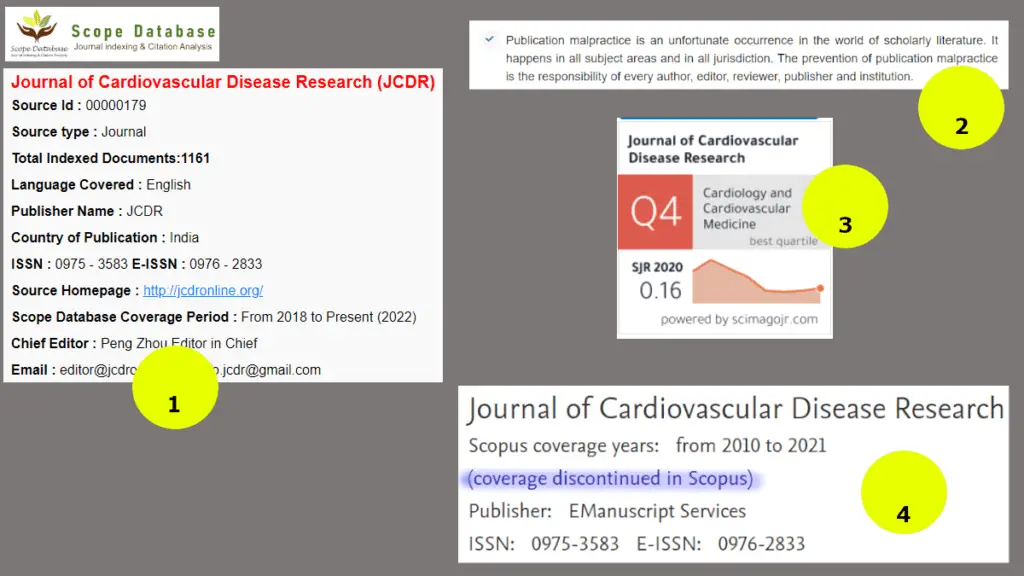In one of our Twitter posts, we questioned whether referring to an old Scopus ranking was transparent and/or violated the malpractice statement provided by Scope Database.
You can only say so much in 280 characters, so we thought we would expand a little by writing this article.
Scope Database
Scope Database is an indexing platform. On their web site it says:
“Scope Database is a collection of bibliographic citation database of scholarly scientific journals, conference proceedings, trade journals and book series. Scope Database is the world’s most trusted global citation database used by many research Institutions all over the world. Scope Database provides extensive summary of the research achievements in the fields of Science, Engineering, Technology, Management, Medicine, Social Sciences, Arts and Humanities etc.“
To be frank, we would question the claim being made in the highlighted text (which we have highlighted), but that is not the purpose of this article.
We looked at Scope Database in a previous article, and were quite critical. When we started tweeting about this database again, we noted that they had made some changes of the things we had been critical about. We are not saying that the changes were made due to our influence, but it is good to see that changes have been made to their web site.
That is not to say that we no longer have any concerns and, if you look at our tweets (hash tagged with #ScopeDB_Pub), you will see some of the criticisms we have.
In this article we focus on just one of the criticisms we have made, which can be seen in this tweet. The image that we used in that tweet is shown above, an image we will refer to in the rest of this article.
The journal
The journal that is the focus of our attention is the Journal of Cardiovascular Disease (JCDR). This journal is indexed by Scope Database, with the entry made by Scope Database being shown in (1) of the image above.
On the journal’s web site, the journal appears to claim that it is indexed by Scopus (see (3) in the image). Just to be clear (3) is captured from the journal’s web site, not from Scopus.
The image (3) actually shows an SJR (SCImago Journal Rank) of 0.16 in 2020. We can confirm that the journal was indexed by Scopus in 2020, and that it had an SJR of 0.16 (actually 0.155).
Malpractice Statement
On their web site, Scope Database has a malpractice statement, which says (see (3) in the image):
“Publication malpractice is an unfortunate occurrence in the world of scholarly literature. It happens in all subject areas and in all jurisdiction. The prevention of publication malpractice is the responsibility of every author, editor, reviewer, publisher and institution.“
The role of Scope Database is to validate (and we assume monitor) journals that wish to be listed on their web site.
The issue
The issue we have with the Journal of Cardiovascular Disease, and with Scope Database, is that the journal is no longer indexed by Scopus (see (4) in the image). We would pose these questions.
- Is it right for a journal to report an SJR rank from the past, when they are no longer indexed by Scopus? The answer is probably yes, but should the journal also state, on their web site, that it is no longer indexed by Scopus? The issue is that the unwary reader might assume that the journal is still indexed by Scopus.
- We would ask Scope Database whether being opaque about the journal being indexed by Scopus violates Scope Database’s malpractice statement?
If the answer to 2), above, then we ask that Scope Database write to the journal asking them to rectify this point. Until they do, the journal should be removed from Scope Database.


